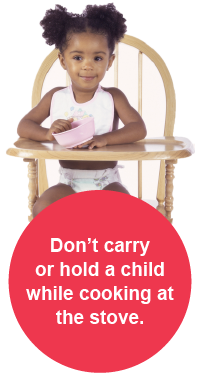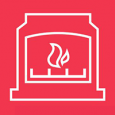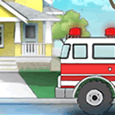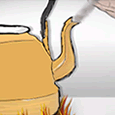You are here
Burns and Scalds
Burns and Scalds
 Since young children are still developing, they have thinner skin than adults, which can result in more serious injuries from a burn or scald. One of the ways young, curious kids learn about their surroundings is through their sense of touch. Sometimes their explorations can lead them to reach out and touch hot objects, resulting in an injury. Here are a few simple steps to keep your child safe from potential burns and scalds in your home.
Since young children are still developing, they have thinner skin than adults, which can result in more serious injuries from a burn or scald. One of the ways young, curious kids learn about their surroundings is through their sense of touch. Sometimes their explorations can lead them to reach out and touch hot objects, resulting in an injury. Here are a few simple steps to keep your child safe from potential burns and scalds in your home.
The Hard Facts About Burns and Scalds
- Fire/burn related injuries are among the leading ten causes of unintentional injury in children ages 0 to 5, with children 2 and younger at greatest risk.
- Every day, 300 children ages 0 to 19 are treated in emergency departments for burn-related injuries.
Top Tips Preventing Burns and Scalds
- Create a kid-free zone. Teach younger children to stay at least 3 feet away from your cooking space. If you need to watch babies while cooking, place them in highchair outside of the kid-free zone where you can see them.
- Keep hot objects out of children’s reach. Cook on the back burners of the stove and turn pot handles away from the edge. Keep hot foods and drinks away from the edge of your counters and tables.
- Teach older children how to cook safely. Make sure they don’t leave the kitchen while cooking and use oven mitts or potholders to carry hot pots and pans.
- Check bathwater temperature. Before placing your child in the bath, check the water temperature with on the inside of your wrist. The water should feel warm to the touch, not hot.
- Watch children around fireplaces. When a gas fireplace is turned on, the glass is extremely hot and can take more than an hour to cool down after it is turned off. Keep children away from the fireplace to prevent burns from the hot glass.
Learn More About Preventing Burns and Scalds
Learn more about preventing burns and scalds and fire safety. Here’s more information about keeping kids safe around fireworks and button batteries.









